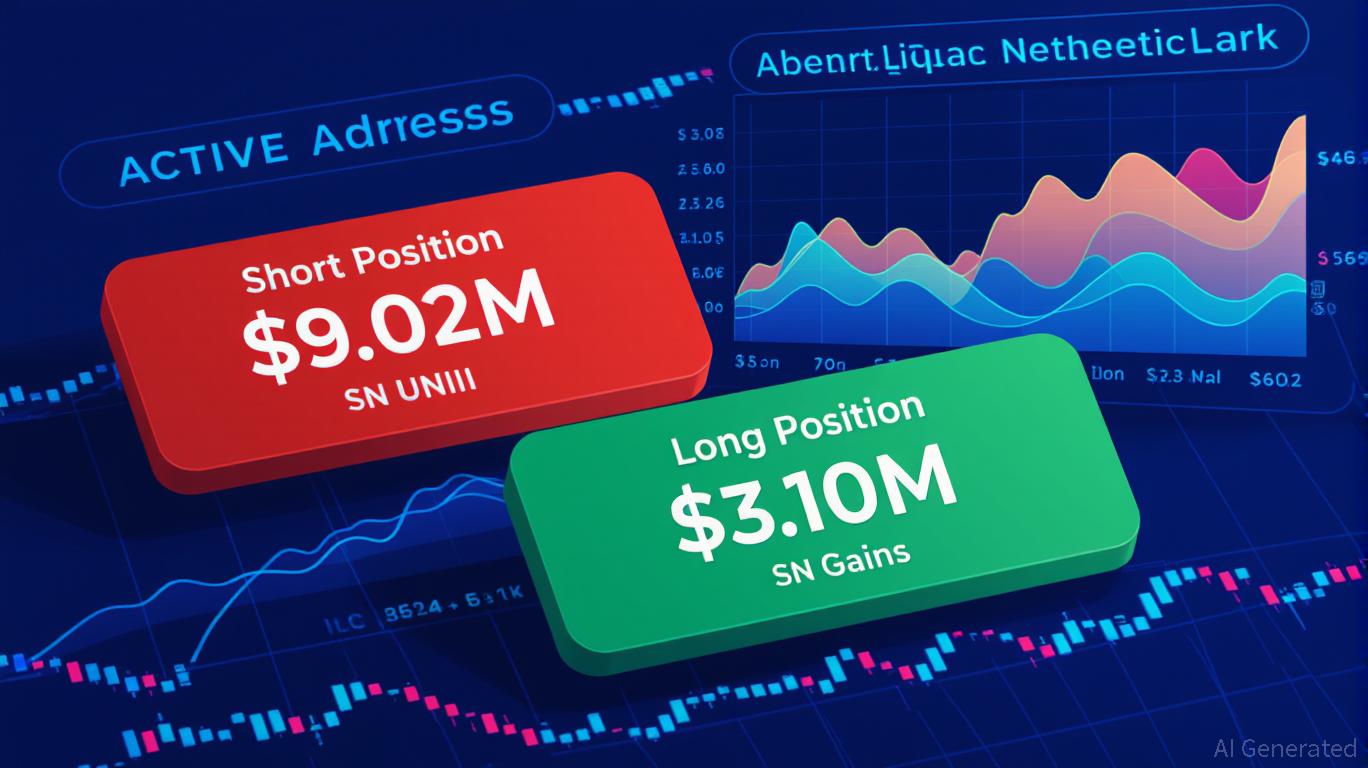XRP News Today: XRP ETFs: Wall Street's Pathway to a $6 Trillion Ambition
- U.S. regulators fast-track XRP ETF approvals, with 21Shares, Franklin Templeton, and Canary Capital nearing launches by late November. - Analysts predict XRP could surge to $100–$1,000 if multiple ETFs debut simultaneously, potentially pushing its market cap to $6 trillion. - Ripple's $4B funding round and SEC court rulings validate XRP's utility in cross-border payments, signaling institutional adoption. - Risks persist, including regulatory delays and unmet adoption targets, though ETFs could normalize
The U.S. crypto sector is poised for a major breakthrough as several XRP-centric exchange-traded funds (ETFs) near regulatory approval, with experts anticipating a significant price rally for the token. Well-known crypto analyst Jake Clever has suggested that if multiple
Regulatory Acceleration and ETF Race
The U.S. Securities and Exchange Commission (SEC), under Chair Paul Atkins, has sped up the review process for crypto ETFs, shortening the approval period from 240 days to just 75, as detailed in

This rush to market demonstrates growing institutional trust. More than a dozen XRP ETFs are now listed on the DTCC’s pre-launch roster, including offerings from Bitwise, ProShares, and Volatility Shares, according to
Market Impact and Price Outlook
XRP’s current market value is about $138 billion, based on a circulating supply of 60 billion tokens, according to
Technical experts point out that XRP has recently bounced off a crucial support level near $2, and a move above $2.70 could trigger a rally toward $3.10–$3.40, according to
Institutional Involvement and Ripple’s Approach
Ripple’s CEO, Brad Garlinghouse, has positioned XRP as a link between conventional finance and blockchain, highlighting its usefulness for cross-border payments and institutional transactions, according to
The likely approval of XRP ETFs also signals a pivotal moment for Ripple after years of legal disputes with the SEC. A 2023 court decision clarified that XRP is not considered a security when traded on exchanges, opening the door for regulated investment products, as mentioned in
Risks and Considerations
Despite the strong momentum for ETFs, critics point out potential pitfalls. Achieving a $100–$1,000 price would require extraordinary growth, something few alternative coins have managed without extreme market shifts, as highlighted in
Disclaimer: The content of this article solely reflects the author's opinion and does not represent the platform in any capacity. This article is not intended to serve as a reference for making investment decisions.
You may also like
Quantum Computing Could Break Bitcoin Security — Here’s What You Can Do Now to Secure Your BTC

Hyperliquid (HYPE) Price Rally: Increased On-Chain Engagement and Institutional Interest Drive Expansion Prospects
- Hyperliquid's HYPE token surged 32% driven by whale trading and institutional adoption via HIP-3 framework. - Whale activity shows $9M UNI short vs. $3.1M long positions, highlighting platform's speculative role in volatile assets. - Institutional partnerships with RedStone and Felix, plus 21Shares' ETF application, signal growing market confidence. - TVL reached $5B with 73% decentralized trading share, but regulatory gaps and leadership changes pose sustainability risks.

The Growing Fascination with Hyperliquid: Is This the Next Evolution in Cryptocurrency Trading?
- Hyperliquid dominates decentralized trading in 2025 with $303B Q3 volume, 62% perpetual DEX open interest, and $5B TVL growth. - Ecosystem expansion includes HyperEVM (100+ protocols, $2B TVL) and USDH stablecoin (backed by BlackRock , $2.2M trading volume). - Institutional adoption grows via 21Shares' ETF application, but risks include regulatory scrutiny, 16-validator security vulnerabilities, and HYPE token volatility. - Competitors like Aster (near-$30B daily volume) challenge Hyperliquid's dominance

YFI drops 2.95% over 24 hours as market experiences turbulence
- Yearn.finance (YFI) fell 2.95% in 24 hours to $4,851 amid crypto market volatility. - Despite short-term gains (0.96% weekly, 2.52% monthly), YFI has dropped 39.62% over one year. - Traders analyze technical indicators and on-chain data to assess if the dip is a correction or deeper trend. - A backtest evaluates moving averages and volume signals to test strategies for mitigating losses during volatility.